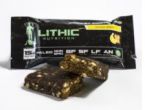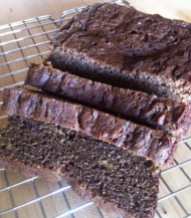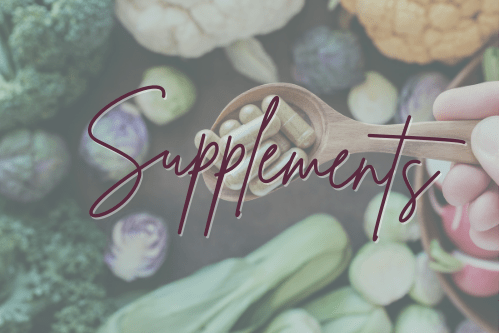Well, I bit the bullet…or more accurately the cricket. Since my post about discovering cricket powder at IFT17, I have been experimenting with this “less than conventional” source of protein in smoothies and baked goods. I even tried a few bars made with cricket powder. And so far, so good.

For a ready-made product, I recommend bars by Lithic Nutrition, a new company out of Denver, CO. I think this company has nailed its flavors and texture. Ingredients in Lithic’s Banana Bread, Blueberry Vanilla, and Dark Chocolate Brownie bars are non-GMO and include almonds, dates, sea salt, honey, real fruit, and, of course, cricket powder. No gluten, no soy, no lactose, no fillers, no artificial ingredients. How’s that for clean!
Each bar contains 6g of fiber, 110mg of sodium, 15g of protein, and 14-16g of sugar. While the sugar content is a bit high, the fact that it comes from dark chocolate, cacao, real bananas, real blueberries, and real fruit extracts goes a long way toward making these bars a good addition to any high-intensity workout where keeping the body fueled is a must. As of this writing, you’ll find Lithic bars sold only online. However, be on the lookout in stores. I expect to see Lithic bars on shelves soon.
As for my other experimenting, I have to admit that not all of my combinations were worth duplicating or sharing. The right blend of ingredients and the right amount of cricket powder are key! My two favorite recipes are at the end of this post. But first, here are a few more discoveries.
- The taste of cricket powder is a bit earthy, but how many times do you consume protein powder by itself? When blended into a smoothie or added to your favorite baked-good recipe, your tastebuds won’t detect it.
- Cricket powder is easily digestible, making it a great protein source for sensitive systems.
- As an alternative to whey, egg, soy or other animal proteins, cricket powder is packed with calcium, iron, vitamins B2 and B12, omega-3 fatty acids, unsaturated fats (the good kind), and all amino acids. To get this same nutrient-dense profile, most products would need to be enhanced with this array of micronutrients.
- Crickets harvested for human consumption are raised strictly for that purpose; they are not diverted from any other feed supply. In addition to making sure the powder is clean, clean, clean, manufacturers of quality cricket powder use only food-grade equipment, facilities, and processing methods for production.
- Environmental sustainability is a plus, too. Crickets require far less water and food per pound of yield compared to the traditional farming of other animals.
- The greatest caution I can share to date is that crickets are related to crustacean shellfish. So, if you have a shellfish allergy, do not tempt fate.
So ask yourself, what’s not to like about cricket powder…once you overcome the “ick” factor? To help nudge you forward, here are a couple of recipes to try.
Protein Smoothie

1 C almond milk
2 C fresh or frozen berries
1 T flax or chia seeds
2 T cricket powder
1 C green tea
– Place all ingredients in a blender and whirl until smooth. Makes 3 cups.
Banana Bread

2 bananas
2 T coconut oil (softened)
1/3 C coconut milk
2 tsp vanilla
3/4 C cricket powder
3/4 C almond flour
1 T buckwheat flour
1 1/2 tsp baking powder
1 1/2 tsp baking soda
1 T cinnamon
1 tsp ginger
1/4 tsp sea salt
– Preheat oven to 375 degrees F.
– Grease a 9-inch bread pan with coconut oil. Set aside.
– Place the first 4 ingredients in a blender and blend until smooth.
– Combine the 8 dry ingredients in a medium size bowl; mix until well blended.
– Pour the wet ingredients into the bowl with the dry ingredients; stir just until moist.
– Pour the batter into the greased bread pan and place in the oven.
– Set a cookie sheet on top of the bread pan to seal in moisture while baking.
– Bake for 45 minutes.
– Cool before removing loaf from pan, and cool again before slicing.
Here’s to your health and vitality!





